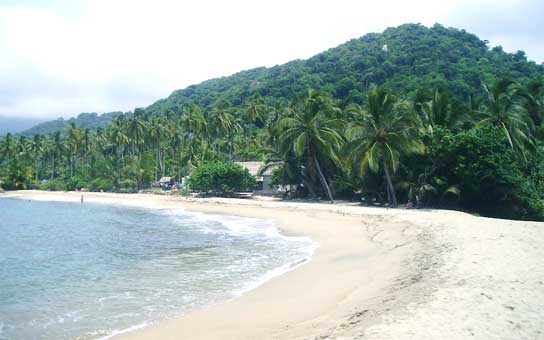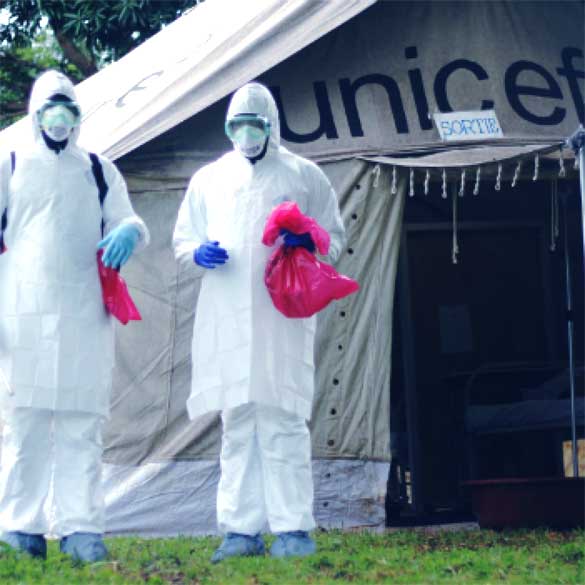
By ADIL KHAN
Since 2012 the Colombian State and FARC representatives have been engaged in peace negotiations as the country seeks to emerge from five decades of civil strife. Should these talks finally wield a peaceful resolution, which area of development will Colombia next dedicate resources to, in order to further social and economic growth? The answer may lie in tourism. If a credible, nationwide security situation is achieved, will that allow for Colombia to then cultivate a thriving tourism industry which will transform this Latin American nation, and become instrumental in its development?
In 2013 alone Colombia attracted 1.7 million tourists; more than a 300% increase compared to the number of visitors in 2002. Similarly, the latest tourism revenue figures from the World Bank equate to approximately $3.2 billion; whereas in 2002 it was close to $1.2 billion. And according to the Ministry of Tourism now “the only risk for tourists is wanting to stay.” This is in stark contrast to two decades ago when the country could have been described as a “murderous-drug-and-crime-ridden-Latin-American-hellhole.”
Colombia has made great strides to transform itself into a cultural and tourism hub, which may encourage further investment and economic progress. Improved internal security has meant greater stability. This is allied with an increased number of flights which allows for a rising number of international travellers. And in Medellin for example, despite its reputation as the former killing capital and base of the infamous drug kingpin Pablo Escobar, there has been an upsurge in the number of cafes and boutiques. Poorer districts have also been recipients of approximately $1.8 billion in municipal government funding, used to develop infrastructure and public transport and thereby create a more welcoming environment to entice visitors.
Ironically Colombia has also embraced its violent past and sought to rebrand it through creative strategies such as “drug and crime-based tourism.” Whilst not actually referring to tourists engaging in illegal behaviour, this approach instead places emphasis on, for instance, niche and insightful ‘Pablo Escobar’ tours. In Bogotá much of the police museum is also dedicated to the efforts of security forces during the pursuit and ultimate demise of Escobar.
Considering these factors, in 2013 the tourism sector reportedly contributed 5.4%of the country’s GDP; and provided employment opportunities to over 1.1 million people. According to Trade Minister Santiago Rojas, additional economic and social developments were also designed to potentially attract a further 4 million tourists by the end of 2014. This will add an estimated $4 billion to Colombia’s revenue. If these trends are to continue, and if additional industry jobs expected to be created do indeed come to fruition, then Colombia’s growth may also increase significantly. Moreover, tourism initiatives could provide an outlet for demobilised rebels. Opportunities as forest wardens or in ecotourism are viable options; thereby aiding the reintegration process and perhaps also preventing former rebels from relapsing back into illegal activities.
While growth forecasts are generally positive, and whilst Colombia frequently features on “places to visit” lists, the country’s progress in the tourism industry still pales in comparison to the remainder of South America. The region saw tourism increase by 4.2% in 2012, whereas Colombia’s individual growth figures were revealed to be 1.8%. Could this be due to the nation’s recent violent history as well as its current negative reputation?
Indeed, petty crime and robberies are still prevalent; particularly in the taxi industry where foreign tourists are perhaps more likely to be targeted. Fear of becoming victims of such crimes may deter visitors, as may the threat of FARC attacks which could persist until a final peace agreement materialises. According to reports, in November 2014 FARC soldiers injured several people in Gorgona national park, “an important eco-tourism destination.” This led Aviatur, the country’s largest tour operator, to indefinitely cease all activities in the park. Not only harming the local economy during a peak season, the consequences of this attack could also cripple future marketing campaigns seeking to positively expose “one of the world’s best preserved natural parks.” As Julia Miranda, the Director for National Parks, states, “who is going to want to spend a few days of recreation when his life is in danger.”
Colombia’s growth then may still be affected by a complex mixture of its reputation of old combined with the violent threat emanating from its current political affairs. Nevertheless, attempts have been made to restore national and international faith in Colombia. Its tourism industry is expanding and could yet prove to be pivotal in the country’s economic diversification and future development.
(This article first appeared in International Policy Digest)











Thanks for sharing. I know I’d love to visit Colombia, appears to be a beautiful place, but threat of death is definitely a big deterrent. What are the local governments doing to ensure security for tourists?
Hello. As I mention in the article, Colombia has transformed itself considerably in recent years due to the successes of the Colombian government in clearing previously dangerous areas, as well as the current peace talks with rebels. Take Bogotá for instance, police and private security personnel maintain a heavy presence in the city. On one hand this could seem intimidating, but ultimately it may serve as a safety net for both residents and tourists should a negative incident occur.
During my visit a few years ago I encountered many tourists of all ages and nationalities, as well as both single and group travellers. The situation is changing but the majority of people are welcoming and are seeking to shed the negative perception of the country. Local tour companies are, for example, operating in some of the mountainous regions close to the Caribbean coast. Again, some of these areas are patrolled by Colombian security forces as there is a possibility of hostility, but generally it is safe.
Of course petty crime still exists but this can be said of many cities around the world. And whilst more violent crimes do still occur, again this could happen in any region of the world. There are still risks, but generally the mainstream tourist areas of Colombia are safe and most visitors have only positive things to say about the country.